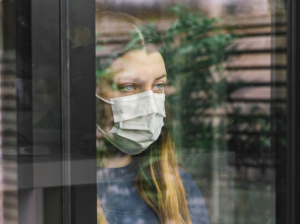
Isolation refers to the objective size of one’s social network and the frequency of contact with same. Loneliness meanwhile is subjective and occurs where a gap is perceived between the social relations one has and what is desired, in relation to quantity or quality (Perlman and Peplau 1981). Isolation and loneliness while related do not always co-occur and it is possible to be lonely while not objectively isolated and similarly to not experience loneliness while isolated. Traditionally research on loneliness has focused on older adults, however recent evidence indicates that young adults also experience loneliness and possibly at an even higher rate (Barreto et al. 2020). Loneliness has been shown to be associated with poorer physical and mental health outcomes emphasizing the importance of efforts to understand, prevent and address this issue (Fried et al. 2020). Currently, however quality evidence on effective interventions for loneliness remains lacking across the life course. For instance, in a recent rapid review of RCT evidence for video calls as an intervention for loneliness or social isolation in older adults we found just 3 studies to include, with no conclusions based on this limited evidence possible (Noone et al. 2020).
Internationally, initial evidence on loneliness during Covid-19 indicates that young adults are experiencing the highest levels of loneliness at this time (Bu et al. 2020; CSO 2020; Losada-Baltar et al. 2020; ONS 2020). Indeed evidence from Ireland indicated that in April 2020, reports of loneliness (at least some of the time) had actually decreased in those aged 70 and over, while increasing in all other age groups especially in those aged 18-34, where prevalence more than doubled compared to two years ago (CSO 2020). In Britain meanwhile, past 7 days loneliness was 51% in April-May in those aged 16-24, compared to 30% overall (ONS 2020).
While it does appear that young adults, who may also have experienced some of the greatest shifts in day-to-day life are experiencing high rates of loneliness at this time, it is also important to consider changes in current overall prevalence. To date evidence on this is mixed. Surveys from Ireland and the US indicated that the prevalence of loneliness had increased overall compared to 2018, with an increase of almost 10% reporting loneliness at least ‘some of the time’ in Ireland (CSO 2020) and an increase of 2% reporting loneliness ‘often/always’ in the US (McGinty et al. 2020). In contrast to this, however, data from Great Britain revealed the prevalence of feeling lonely often/always to be the same as before lockdown at 5% (ONS 2020), with an early report from a UCL panel study, also describing stable loneliness levels (based on 3-item UCLA) in the UK since the beginning of lockdown (UCL 2020).
Evidence has been similarly mixed in relation to associations with different studies also assessing different factors. In Spain factors associated with loneliness beyond younger age were; being female, having negative self-perceptions about ageing, more time exposed to news about Covid-19, lower contact with relatives, higher self-perception as a burden, fewer positive emotions, lower resources for entertaining oneself, lower quality of sleep, higher expressed emotion (Losada-Baltar et al. 2020) as well as depressive, anxiety and PTSD symptoms (González-Sanguino et al. 2020). In the UK, loneliness continued to be higher among those; living alone, those with lower household income levels, and those with an existing diagnosed mental health condition (UCL 2020). While notably in Ireland, the greatest increases in loneliness were observed in those with higher levels of education, rating their health status as good/very good, living in rented and detached accommodation, and rated as average in terms of deprivation (CSO 2020).
Based on initial data from several countries, loneliness at this time of Covid-19 appears to be highest in young adults. Associations with poorer mental health, including pre-existing diagnoses, are also indicated. Conclusions to be drawn from these early studies are however limited. The varying definitions and measures of loneliness employed (Fried LP et al. 2020), cross-sectional designs, as well as the representativeness of samples, all must be considered at this stage. The fact that many of these studies were online only (González-Sanguino et al. 2020; Losada-Baltar et al. 2020; McGinty et al. 2020) is also a key factor in relation to self-selection as well as sample representativeness given the resultant exclusion of those lacking relevant skills or access, a group within which older adults are known to be overrepresented (König et al. 2018).
By Dr Annette Burns, Institute of Public Health in Ireland & Ulster University


Researchers from the Institute of Public Health, Ulster University, Maynooth University, Trinity College Dublin and St James’s Hospital are currently running a survey with international partners to provide ongoing understanding of how people around the world are coping with Covid-19. Please click here to participate.
We want to understand how Covid-19 has impacted on caring roles, health behaviours, loneliness, isolation, personal experiences and coping strategies during Covid-19.
References
Barreto M, Victor C, Hammond C, Eccles A, Richins MT, Qualter P (2020) Loneliness around the world: Age, gender, and cultural differences in loneliness Personality and Individual Differences:110066
Bu F, Steptoe A, Fancourt D (2020) Who is lonely in lockdown? Cross-cohort analyses of predictors of loneliness before and during the COVID-19 pandemic medRxiv
CSO (2020) Social Impact of COVID-19 Survey April 2020 https://www.cso.ie/en/releasesandpublications/ep/p-sic19/socialimpactofcovid-19surveyapril2020/
Fried LP et al. (2020) A unified approach to loneliness. The Lancet 395:114
González-Sanguino C, Ausín B, ÁngelCastellanos M, Saiz J, López-Gómez A, Ugidos C, Muñoz M (2020) Mental Health Consequences during the Initial Stage of the 2020 Coronavirus Pandemic (COVID-19) in Spain Brain, Behavior, and Immunity
König R, Seifert A, Doh M (2018) Internet use among older Europeans: an analysis based on SHARE data Universal Access in the Information Society 17:621-633
Losada-Baltar A, Jiménez-Gonzalo L, Gallego-Alberto L, Pedroso-Chaparro MdS, Fernandes-Pires J, Márquez-González M (2020) “We’re staying at home”. Association of self-perceptions of aging, personal and family resources and loneliness with psychological distress during the lock-down period of COVID-19 The Journals of Gerontology: Series B
McGinty EE, Presskreischer R, Han H, Barry CL (2020) Psychological Distress and Loneliness Reported by US Adults in 2018 and April 2020 JAMA
Noone C, McSharry J, Smalle M, Burns A, Dwan K, Devane D, Morrissey EC (2020) Video calls for reducing social isolation and loneliness in older people: a rapid review Cochrane Database of Systematic Reviews
ONS (2020) Coronavirus and loneliness, Great Britain: 3 April to 3 May 2020. https://www.ons.gov.uk/peoplepopulationandcommunity/wellbeing/bulletins/coronavirusandlonelinessgreatbritain/3aprilto3may2020.
Perlman D, Peplau LA (1981) Toward a social psychology of loneliness. In: Gilmour R, Duck S (eds) Personal Relationships, vol 3. Academic Press, London, pp 31-56
UCL (2020) Covid-19 Social Study Results Release 6 https://746a1e8d-7231-4b96-9bc2-88b2eb5c4964.filesusr.com/ugd/3d9db5_9dec89d6b9c24e45819db478998dc3af.pdf.

